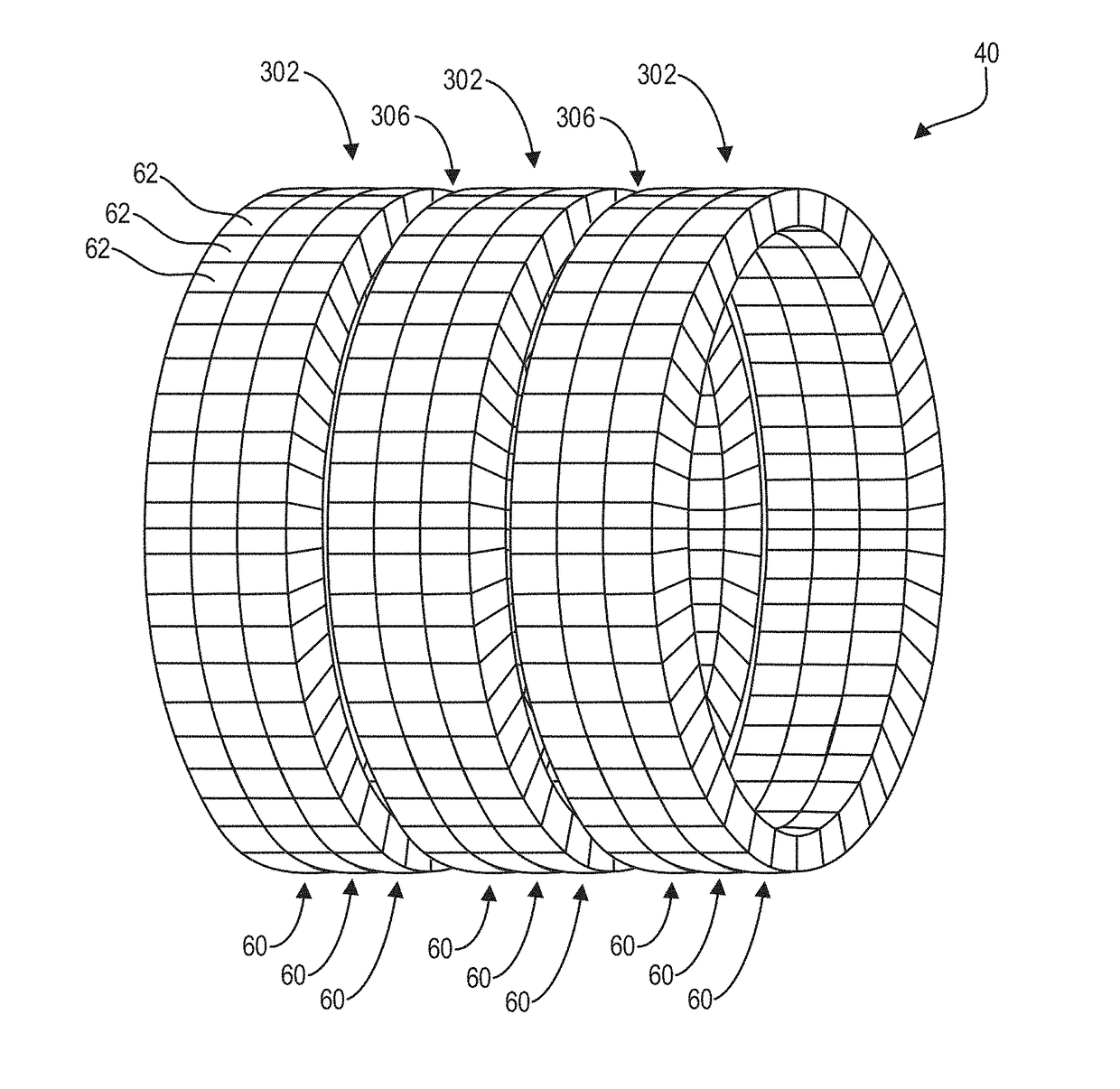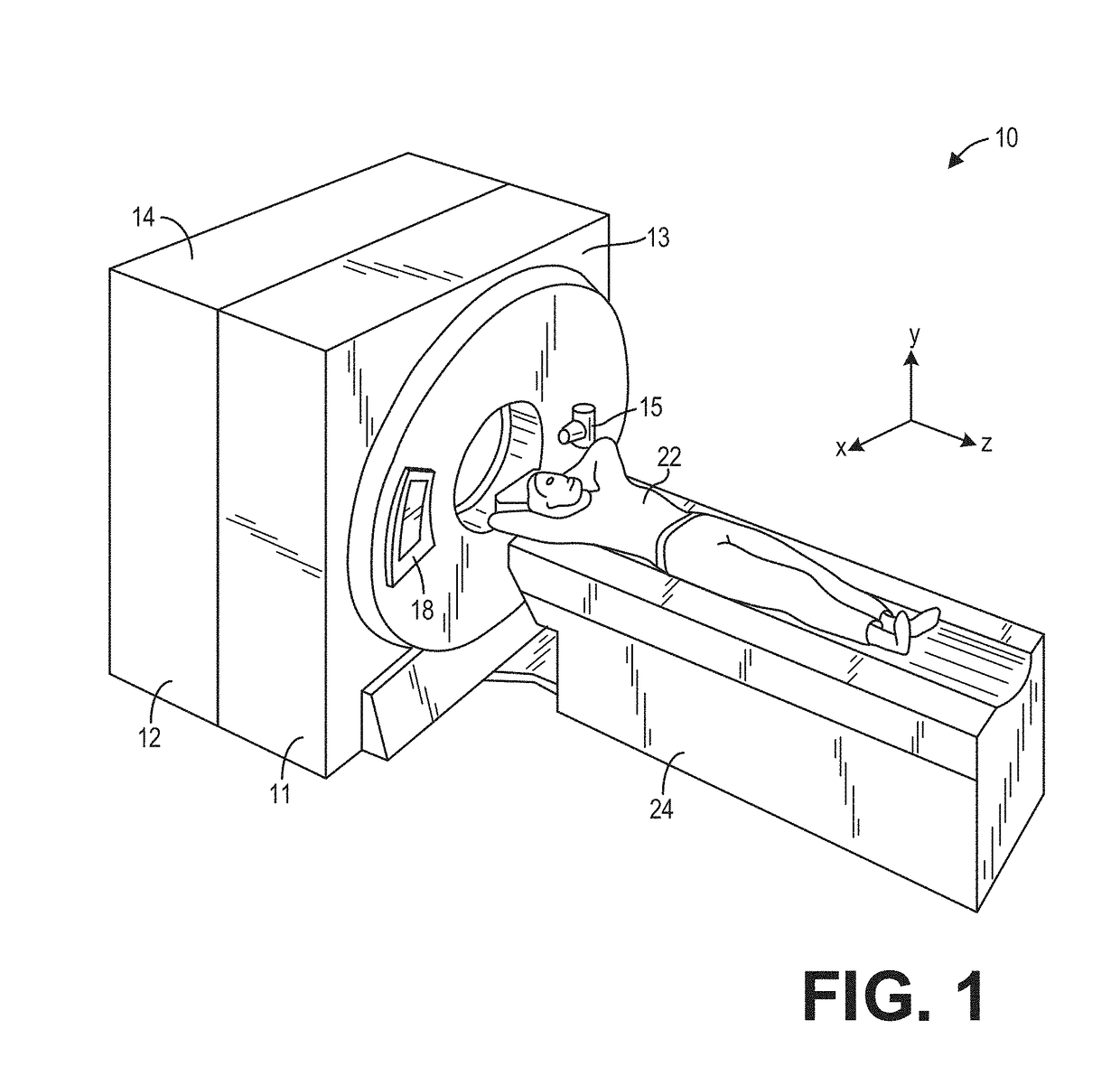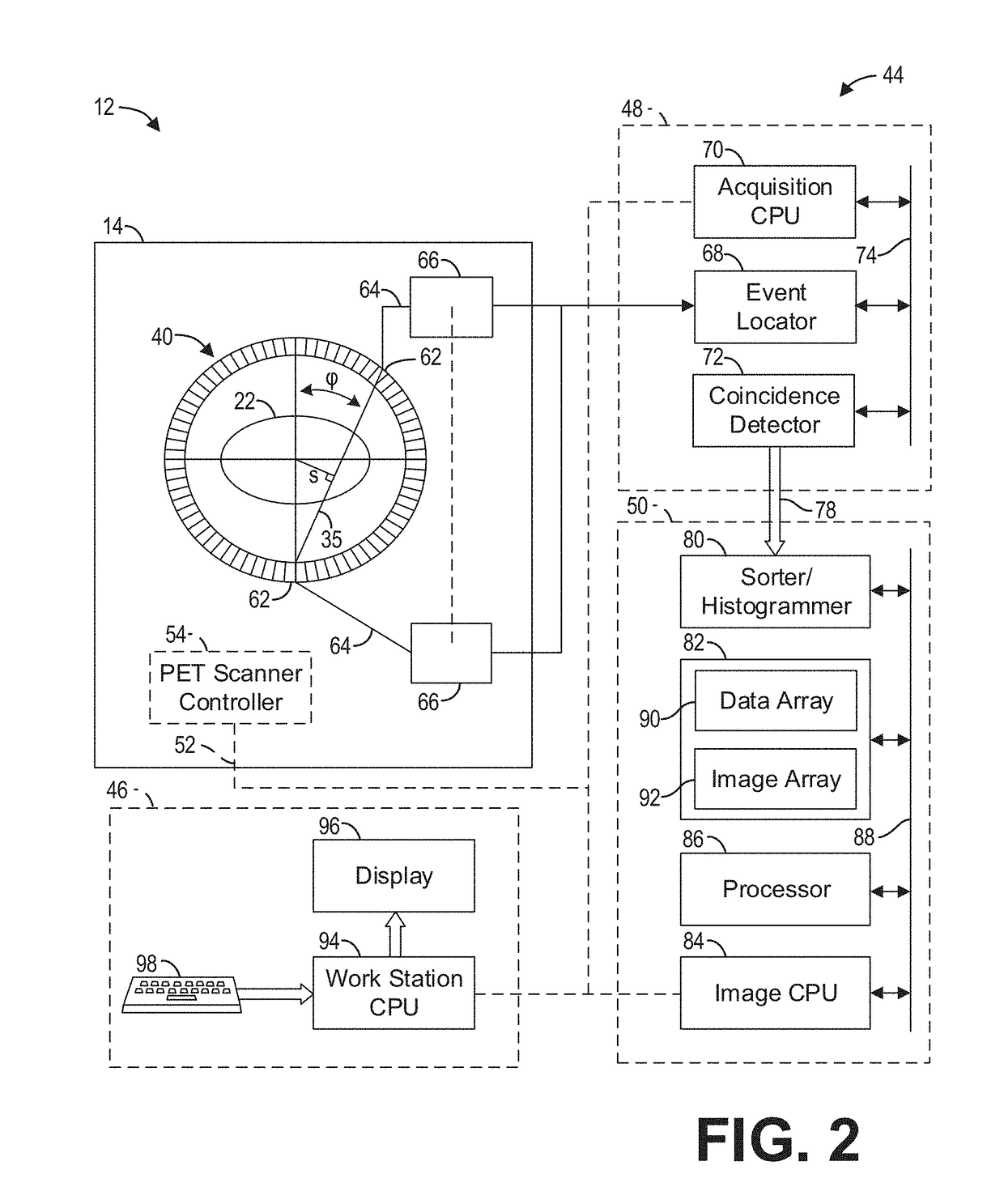Methods and systems for detector gap corrections
a detector and gap correction technology, applied in the field of non-invasive diagnostic imaging, can solve problems such as significant mis-registration errors, corresponding gaps between some image slices, and positioning errors arising from these gaps, and achieve the effect of reducing position errors
- Summary
- Abstract
- Description
- Claims
- Application Information
AI Technical Summary
Benefits of technology
Problems solved by technology
Method used
Image
Examples
Embodiment Construction
[0017]The following description relates to various embodiments of medical imaging systems. In particular, methods and systems are provided for correcting positional errors arising from gaps in a detector assembly. An example of a positron emission tomography (PET) imaging system that may be used to acquire images processed in accordance with the present techniques is provided in FIGS. 1 and 2. As depicted in FIG. 3, the positions of the detectors in the axial direction may not be uniformly spaced. For example, gaps may be present between detector blocks. These gaps cause shifts in the positions of the reconstructed images unless accounted for by the reconstruction algorithm, as depicted in FIG. 4. A method for compensating for the gaps includes inserting pseudo-slices into gaps within a sinogram, as depicted in FIG. 5. In some examples, the sinogram may be transformed from a first data structure, such as the data structure illustrated in FIG. 6, into a second data structure, such as...
PUM
 Login to View More
Login to View More Abstract
Description
Claims
Application Information
 Login to View More
Login to View More - R&D
- Intellectual Property
- Life Sciences
- Materials
- Tech Scout
- Unparalleled Data Quality
- Higher Quality Content
- 60% Fewer Hallucinations
Browse by: Latest US Patents, China's latest patents, Technical Efficacy Thesaurus, Application Domain, Technology Topic, Popular Technical Reports.
© 2025 PatSnap. All rights reserved.Legal|Privacy policy|Modern Slavery Act Transparency Statement|Sitemap|About US| Contact US: help@patsnap.com



